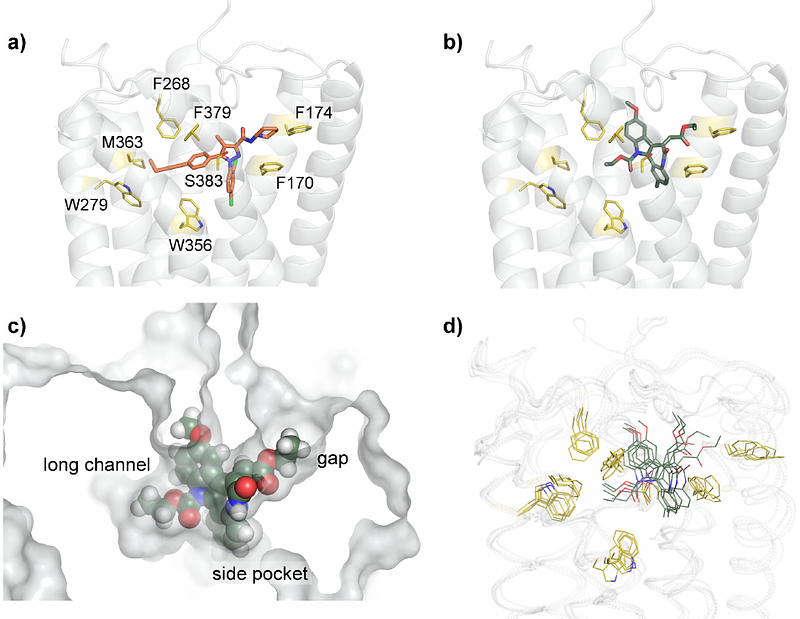Synthesis and pharmacological characterization of UVI3502, a novel cannabinoid receptor 1 (CB1) antagonist/inverse agonist

Synthesis and pharmacological characterization of UVI3502, a novel cannabinoid receptor 1 (CB1) antagonist/inverse agonist
Bengoetxea de Tena, I.; Pereira-Castelo, G.; Martinez-Gardeazabal, J.; Moreno-Rodriguez, M.; Manuel, I.; Martinez, C.; Vaz, B.; Gonzalez-Ricarte, J.; Alvarez, R.; Torres-Mozas, A.; Peccati, F.; Jimenez Oses, G.; Rodriguez De Lera, A.; Rodriguez-Puertas, R.
AbstractThe endocannabinoid (eCB) system regulates several brain functions and is implicated in neurological disorders. The pharmacological blockade of cannabinoid receptors has a therapeutic potential for various cognitive deficits, but also produces severe psychiatric side effects. Hence, new cannabinoid compounds that potentiate therapeutic effects, while minimizing toxicity, are required. In this study, we synthesized and characterized a novel antagonist/inverse agonist of CB1 receptors. UVI3502 showed affinity for two [3H]CP55,940 binding sites (IC50Hi 0.47 +/- 1.94 nM and IC50Lo 1470 +/- 1.80 nM). Subsequent binding assays performed in CB1 and CB2 overexpressing membranes determined that the low affinity binding site corresponded to CB1, but the high-affinity binding site of UVI3502 did not correspond to CB2 and the possibility of it corresponding to GPR55 was analyzed. The affinity of UVI3502 for CB1 receptors was further confirmed with neuroanatomical specificity by autoradiography in key brain areas, in which functional [35S]GTPgammaS assays demonstrated that UVI3502 behaved as an antagonist/inverse agonist of CB1 receptors, blocking the stimulation evoked by potent cannabinoid receptor agonist CP55,940 and decreasing basal [35S]GTPgammaS binding. The in silico characterization of the binding to CB1 receptor through molecular docking and molecular dynamics suggests that this activity is explained by the planar and rigid structure of UVI3502, which is optimal for interactions with the inactive state of the receptor. These results indicate that UVI3502 is a novel antagonist/inverse agonist of CB1 receptors, making it a compelling candidate for pharmacologically blocking cannabinoid receptors in the central nervous system.


